Marie Lagerberg at Moat House Meadow, Hoxne, Suffolk
Written and photographed for the Suffolk Magazine, September 2023
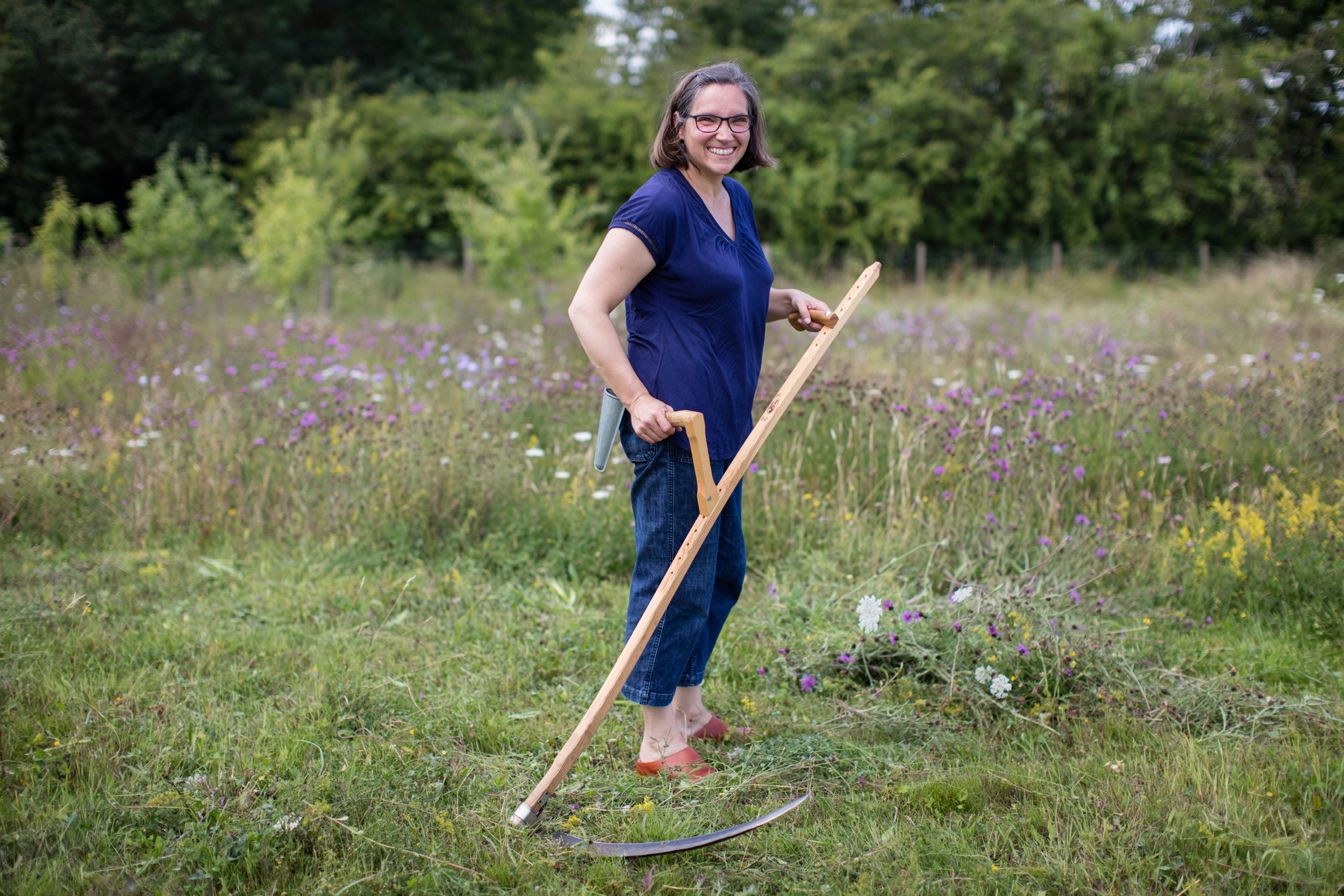
Marie Lagerberg’s interest in native wildflowers began in an unexpected place, and she found herself there for an equally unexpected reason: tractors.
As a Mum with toddlers, living in West London, one of the only places she could find to satisfy her kids preoccupation with agricultural machinery was the Royal Botanic Gardens at Kew, and so they ended up spending a lot of time there. Kew’s origins as an ‘exotic’ garden, and its vast collection of living plants, herbarium samples and seed banks from all over the world might lead one to suspect that our humble native ‘weeds’ are not the top priority there. But Marie explains, “Kew was where I became interested in the distinction between native and cultivated plants.” This was an interest that set her on a path to eventually becoming a volunteer advisor for Suffolk Wildlife Trust, helping people interested in creating a native wildflower meadow of their own.
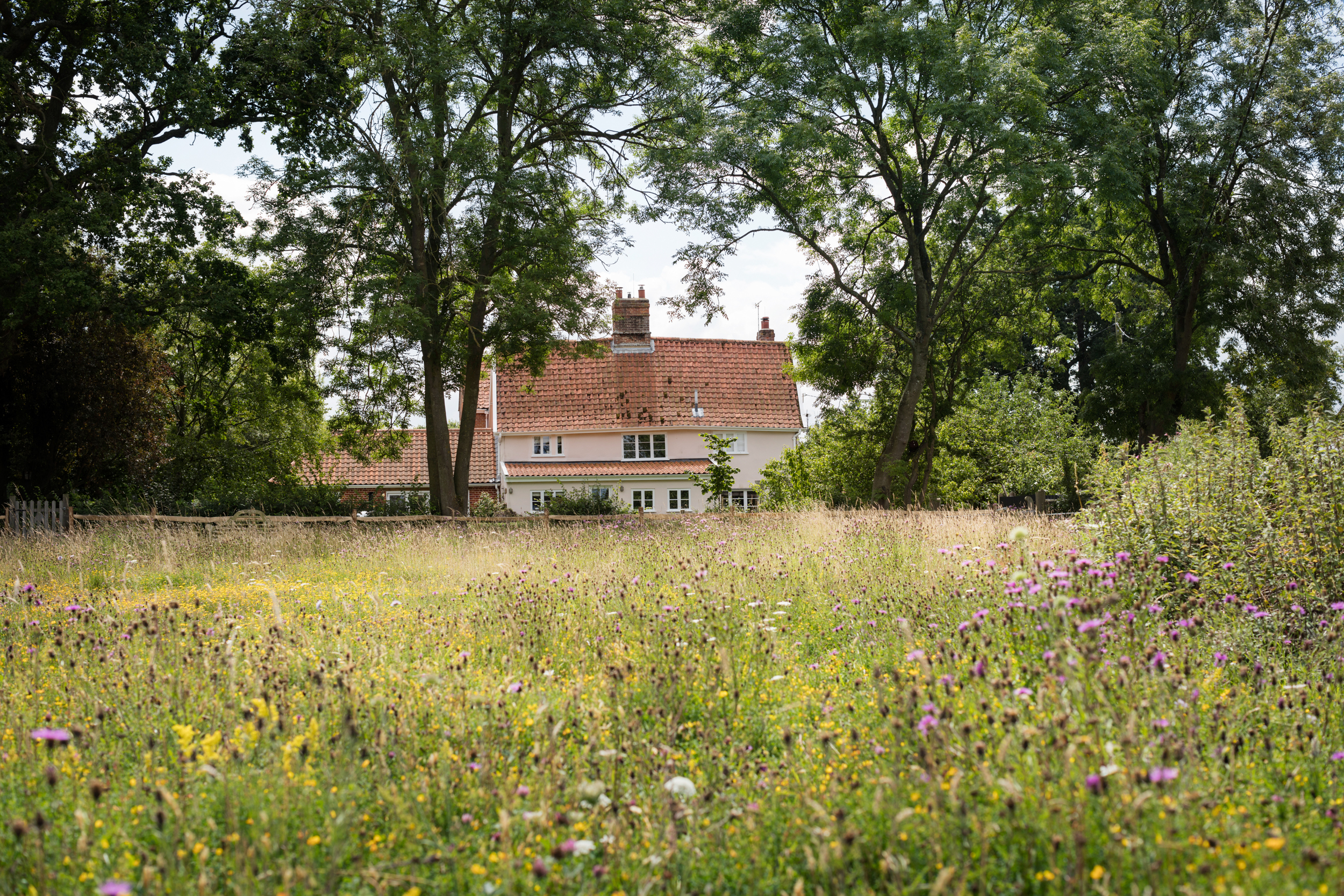
Native plants are of particular interest to conservation-minded people because they have deep relationships with our other native organisms: the soil biota, other plants, insects, birds and mammals; relationships that have been established over millennia. But what we now call a traditional wildflower meadow is a bi-product of human utility; an area of land that is managed for hay and/or livestock grazing. In the past, when Suffolk farms were composed of a network of small fields from 2 to 5 acres in size, the pasture fields were typically subject to one hay cut in June or July, and then the animals were allowed to graze the ‘aftermath’ (literally, ‘after-mowing’: the regrowth of grass after the cutting) There was no extra fertiliser applied, other than dung left by the animals. Other fields in the rotation might be grazed in the spring and rested in the summer. This system of cutting and grazing weakens the grass sward and allows wildflowers to flourish. In the more distant past, before agriculture, wildflower meadows may have existed in areas where herds of grazing wild animals were the dominant influence, moving through the landscape, seeking the most verdant areas and creating conditions comparable to those created by our traditional hay meadow management system.
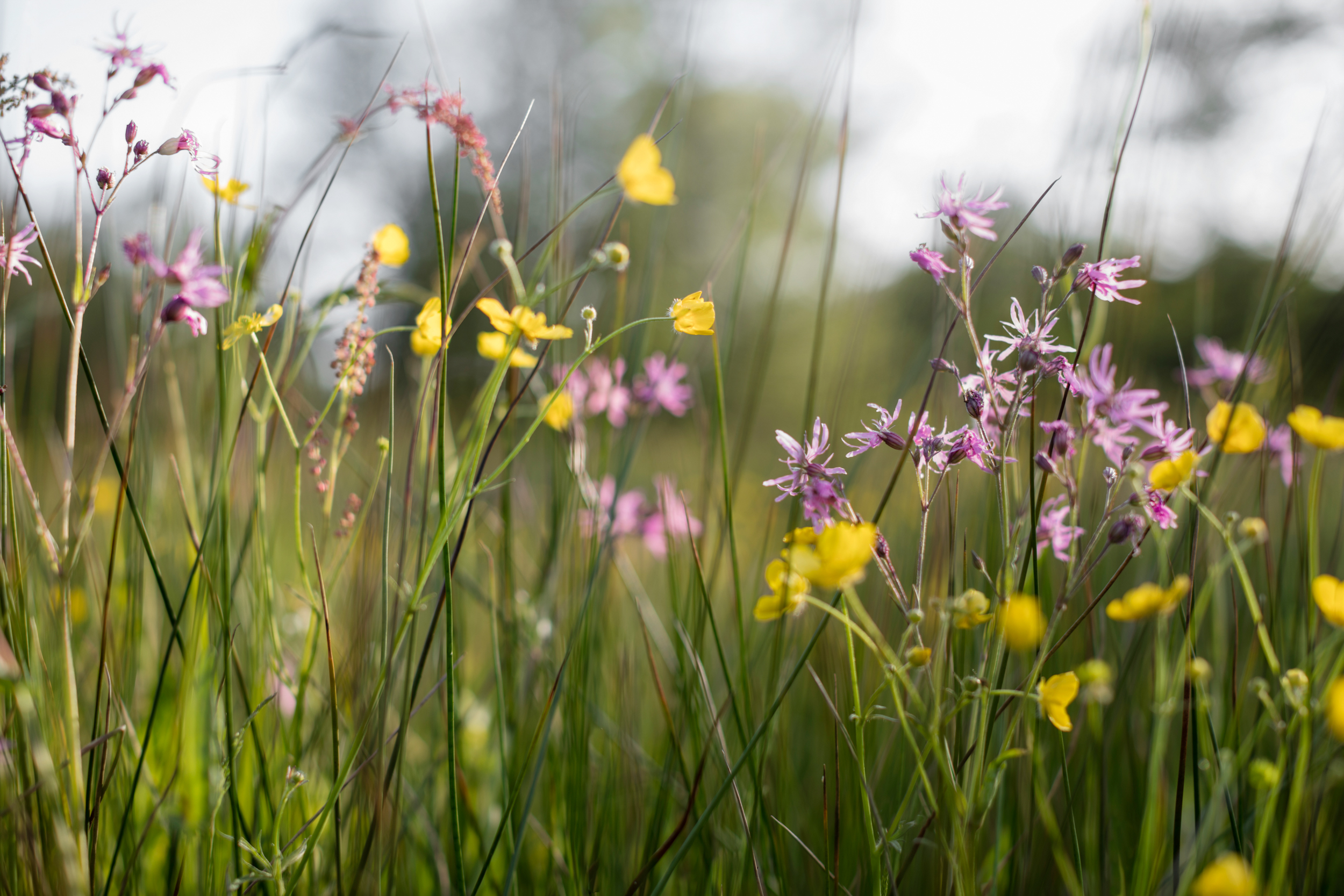
Marie and her family returned to her native Suffolk 15 years ago, to an old farmhouse near the village of Hoxne. Soon after arriving there Marie negotiated with the neighbouring farmer to sell them an adjacent 2-acre plot, taken from an arable field that had been intensively farmed for many years, with the idea of cultivating an old-fashioned hay meadow. She had read about the Coronation Meadows Project: an initiative to create new meadows, after the publication of ‘Our Vanishing Flora’: a report by the wildflower charity Plantlife, which highlighted the disappearance of our flower-rich meadows and grassland. It was this report that first made us aware of the shocking statistic that we’d lost 97% of wildflower meadows in the last 75 years.
Having acquired the land, Marie set about creating her meadow. First job was to enclose it with native hedgerow plants, which limits ingress of fertilisers from the surrounding fields and provides another layer of habitat. She then set about researching the best seed to use. She now recommends anyone thinking about cultivating a wildflower meadow, whether it’s a garden, paddock or arable field, to hold off introducing new seed for at least the first year. She explains, “This allows the historic seedbed the chance to show itself. Given this opportunity, all sorts of unexpected species can pop up; some may not have germinated for years or even decades”. This can give a clue to past use of the land, whether it was pasture, arable or even ancient woodland. The seedbed is like an echo of that place’s history, and may give clues how to manage it moving forward.
There are no standard combinations of flowers in a meadow; the communities of plants on any piece of land varies widely according to soil, drainage, aspect, climate, other wildlife present, and human management; as well as the legacy seeds in the soil. A new landowner may wish to complement the existing seedbed with appropriate introductions. Marie gave great consideration to reseeding; finding a seed producer with local provenance, and sourcing green hay: fresh cuttings for seed dispersal, from a nearby flower-rich meadow, which resulted in rare green-winged orchids establishing themselves. She advises, “It’s important to sow seed that is typical of the local area and appropriate for your soil and conditions, but is also suitable for the way you’ll be managing the land. Some people want poppies and cornflowers, but these are flowers that thrive in the regular disruption of a traditional cornfield management system, not a hay meadow”.
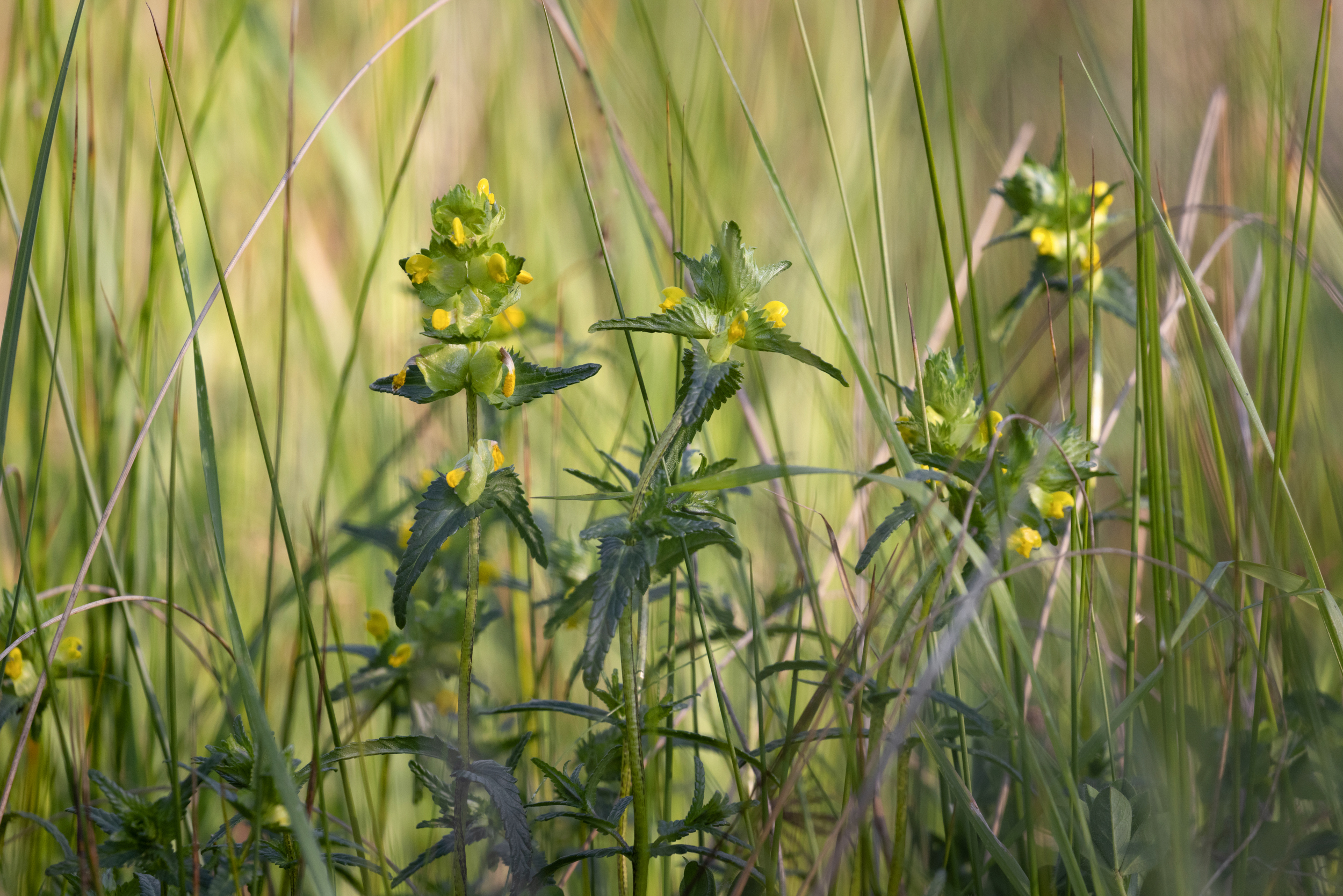
Meadow owners often seek to establish yellow rattle amongst their vigorous grass. Marie explains, “It’s known as the ‘meadow-maker’: it’s hemiparasitic, meaning it steals nutrients from nearby grass roots. In so doing it weakens the grass, allowing other more delicate plants to get a foothold.”
A field under a new hay cutting regime takes time to establish a balanced plant community, and will continue to be subject to annual differences, influenced by natural seed arrivals and variable weather patterns: all part of the fascination of a wildflower meadow. Only in a handful of ‘relic’ meadows, ones that somehow survived ‘improvement’ and have been under the same management regime for many decades, do we see very stable communities of plants. These rare jewels are often now important nature reserves.
Most new meadows are, effectively, wildflower gardens or conservation initiatives, rather than working agricultural fields. Marie goes on to explain that often the main challenge to owners who don’t have an immediate need for their hay is the logistics of dealing with these unwanted ‘arisings’. And it must be remembered that, whether you have a use for the hay or not, the cut and removal is essential to promote wildflower diversity. “When advising a new meadow owner, I always emphasise the importance of first establishing a system to deal with their hay. Otherwise it’s easy for them to quickly become overwhelmed and defeated by the sheer quantity they’re left with”.
In her meadow, Marie cuts small sections at different times throughout the summer – that way the areas cut early in the season have a second flush of growth and flower and prolong the availability of food and shelter for the wildlife. Marie encourages people to cut thoughtfully; in such a way that resident wildlife can easily escape into new areas; and leaving some areas uncut until spring, which provides an opportunity for insects to over-winter either as eggs or larvae. It’s easy to forget if we want the butterflies, we need to provide somewhere for their eggs and caterpillars to develop.
Small meadows can be cut very effectively with hand scythes, but they still create a surprisingly large quantity of hay. On an established and diverse meadow, the freshly cut hay has potential value as a way to disperse seed in new areas. Every year, Marie donates much of her green hay to other nearby landowners, offering them good local provenance and helping to create wildlife corridors through the countryside. She explains why this is important, “Single meadows are great, of course, but they can be like isolated islands. Closely connected meadows, with similar plant communities, allow wildlife to travel through the countryside and establish themselves in new areas”. Suffolk Wildlife Trust run a hay sharing scheme that will help owners establish new meadows by connecting them with meadows in their area who are willing to donate green hay.
Alternatively, one can look for local livestock owners who might be glad of the hay. These may be smallholders or rare breed farmers who have animals with less fussy hay tastes. Marie tells me she has one grateful recipient whose ponies suffer with laminitis from rich spring grass but thrive on stalky wildflower hay. If wildflower hay does go to livestock it must be remembered, of course, that the field is kept clear of poisonous ragwort.
If one has a suitable corner, composting may be a viable solution, but Marie warns, “Bear in mind, there will soon be a very large pile. Although it would make great habitat for grass snakes!” And green hay can potentially rot down to become a pollutant, particularly concerning if there’s a nearby watercourse. It’s been suggested that the local council might provide a site for composting on a suitable scale. They would also need a place to put their own cuttings from roadsides and public lands, if they were to manage these places as diverse wildlife habitats!
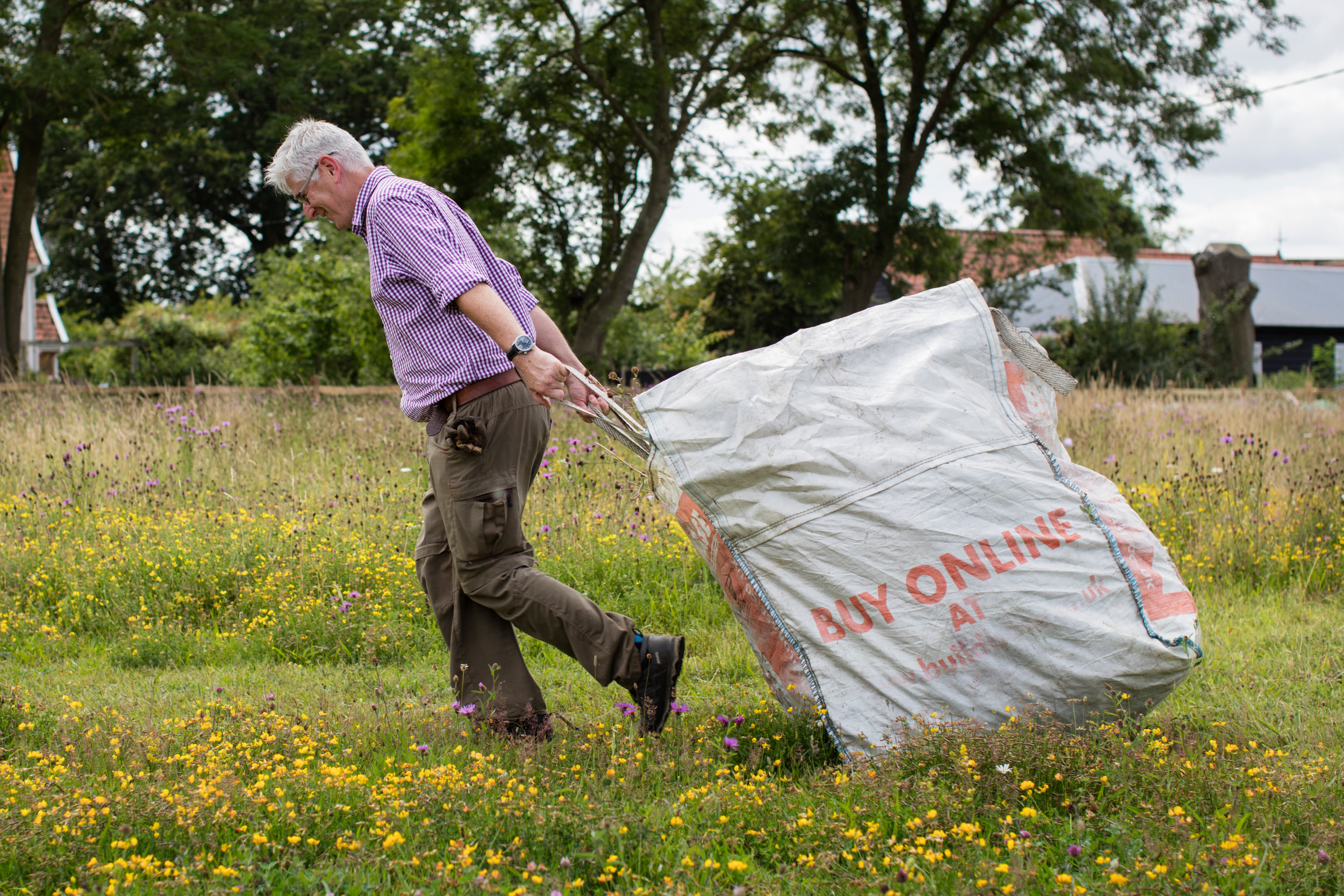
With the willing support of people with hands-on-experience, like Marie Lagerberg, and the expertise and community connections of organisations like Suffolk Wildlife Trust, it should be possible for any landowner, whether they have a suburban garden, or a 2 acre field, to overcome these difficulties and create a beautiful and wildlife-rich landscape. Larger landowners can also implement many of the same principles in their neglected corners, field margins and headlands. Everyone has a potential part to play in restoring our countryside to the glorious diversity of the past. As Marie says “A meadow is an ever-changing, beautiful, dynamic environment: a joy to humans and invaluable to the wildlife it supports”.
If you’re interested in cultivating your own wildflower meadow, big or small, or perhaps you have livestock who would be grateful recipients of diverse wildflower hay, get in touch with Suffolk Wildlife Trust. If you’re interested in volunteering for Suffolk Wildlife Trust please contact gemma.foreman@suffolkwildlifetrust.org
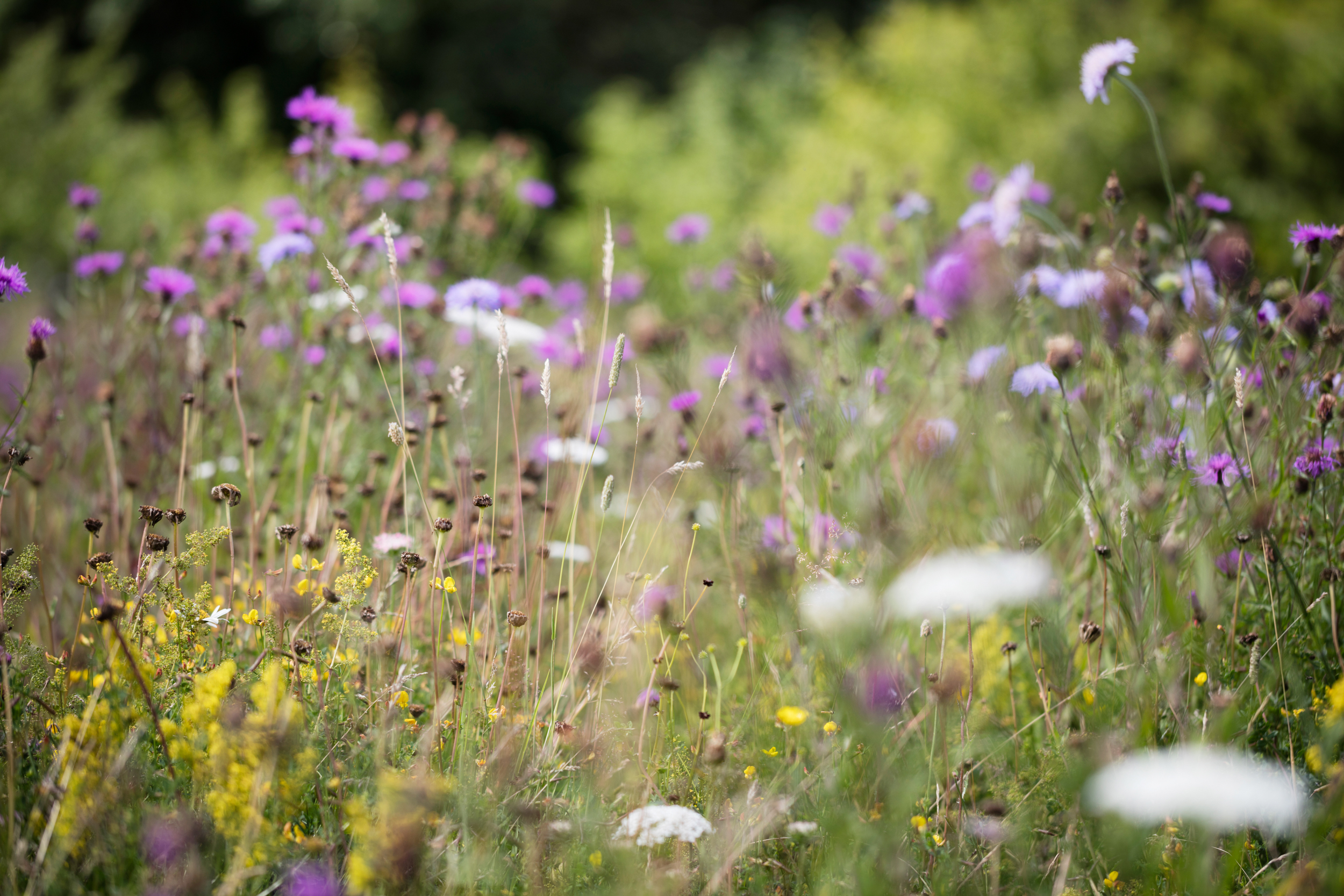
Personal footnote:
As humans we have invented a value system that differentiates between plants that are of value to us and those that are not. The latter category we refer to as ‘weeds’. We often eradicate them fanatically, fearful that they will spread and dominate at the expense of those plants we admire and in which we find greater utility. In the process of ‘weeding out’ the plants that we don’t admire or value, we are losing something of far greater importance: a rich and diverse countryside.